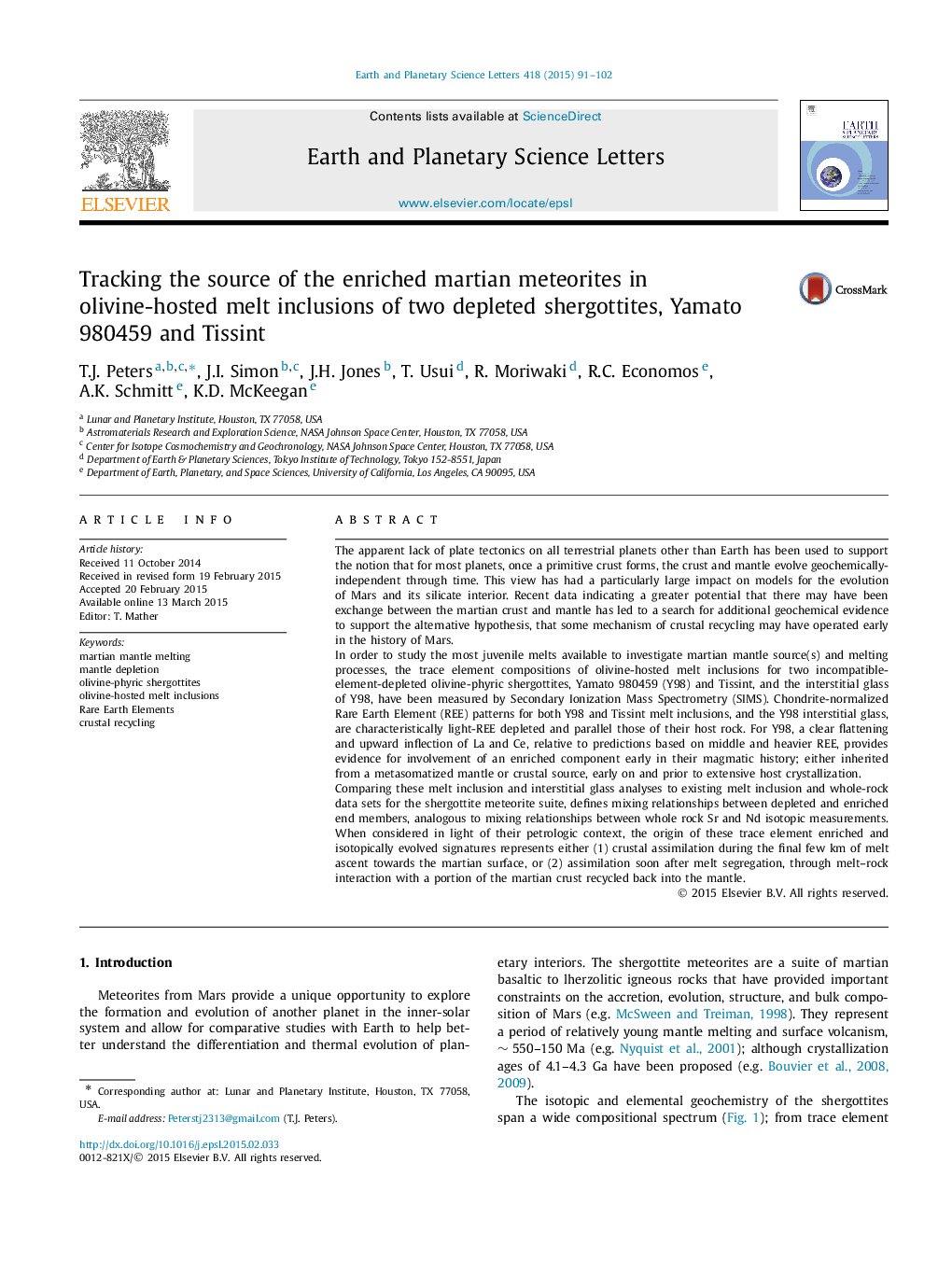| Article ID | Journal | Published Year | Pages | File Type |
|---|---|---|---|---|
| 6428362 | Earth and Planetary Science Letters | 2015 | 12 Pages |
â¢First olivine-hosted melt inclusion trace-element data for depleted martian meteorites.â¢Melt inclusions record their original signatures of mantle melting on Mars.â¢Garnet was an important residual phase during final stages of mantle melting.â¢Rare Earth Element profiles provide evidence for crustal recycling on Mars.
The apparent lack of plate tectonics on all terrestrial planets other than Earth has been used to support the notion that for most planets, once a primitive crust forms, the crust and mantle evolve geochemically-independent through time. This view has had a particularly large impact on models for the evolution of Mars and its silicate interior. Recent data indicating a greater potential that there may have been exchange between the martian crust and mantle has led to a search for additional geochemical evidence to support the alternative hypothesis, that some mechanism of crustal recycling may have operated early in the history of Mars.In order to study the most juvenile melts available to investigate martian mantle source(s) and melting processes, the trace element compositions of olivine-hosted melt inclusions for two incompatible-element-depleted olivine-phyric shergottites, Yamato 980459 (Y98) and Tissint, and the interstitial glass of Y98, have been measured by Secondary Ionization Mass Spectrometry (SIMS). Chondrite-normalized Rare Earth Element (REE) patterns for both Y98 and Tissint melt inclusions, and the Y98 interstitial glass, are characteristically light-REE depleted and parallel those of their host rock. For Y98, a clear flattening and upward inflection of La and Ce, relative to predictions based on middle and heavier REE, provides evidence for involvement of an enriched component early in their magmatic history; either inherited from a metasomatized mantle or crustal source, early on and prior to extensive host crystallization.Comparing these melt inclusion and interstitial glass analyses to existing melt inclusion and whole-rock data sets for the shergottite meteorite suite, defines mixing relationships between depleted and enriched end members, analogous to mixing relationships between whole rock Sr and Nd isotopic measurements. When considered in light of their petrologic context, the origin of these trace element enriched and isotopically evolved signatures represents either (1) crustal assimilation during the final few km of melt ascent towards the martian surface, or (2) assimilation soon after melt segregation, through melt-rock interaction with a portion of the martian crust recycled back into the mantle.
